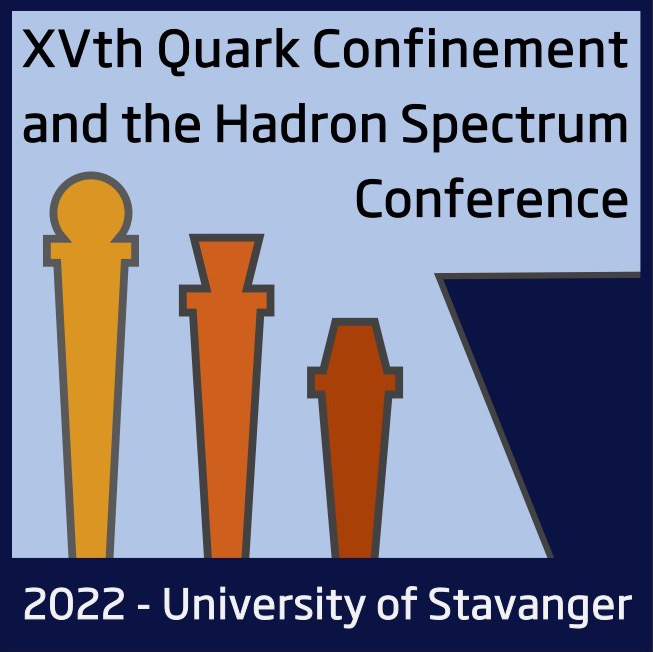Speaker
Description
The double-charm tetraquark meson $T_{cc}^+(3875)$ can be produced in high-energy proton-proton collisions by the creation of the charm mesons $D^{*+} D^0$ at short distances followed by their binding into $T_{cc}^+$. The $T_{cc}^+$ can also be produced by the creation of $D^{*+} D^{*+}$ at short distances followed by their rescattering into $T_{cc}^+ \pi^+$. A charm-meson triangle singularity produces a narrow peak in the $T_{cc}^+ \pi^+$ invariant mass distribution 6.1 MeV above the threshold with a width of about 1 MeV. Well beyond the peak, the differential cross section decreases with the invariant kinetic energy $E$ of $T_{cc}^+ \pi^+$ as $E^{-1/2}$.
Our estimate of the cross section for $T_{cc}^+ \pi^+$ from the triangle-singularity peak is large enough to encourage the effort to observe the peak at the LHC. The observation of such a peak would provide strong support for the identification of $T_{cc}^+$ as a loosely bound charm-meson molecule.
*This work was supported in part by the U.S. Department of Energy, by the National Natural Science Foundation of China (NSFC), by the Natural Science Foundation of Shandong Province of China, and by NSFC and the Deutsche Forschungsgemeinschaft through the Sino-German Collaborative Research Center.

